Camp fYrefly is an annual summer retreat for gender and sexually diverse youth. The camp, which alternates between Regina and Saskatoon, celebrated its tenth anniversary in early August. For all those associated with the camp, that’s a decade of bringing together young people who are often struggling with their sense of self and a decade of saving lives.
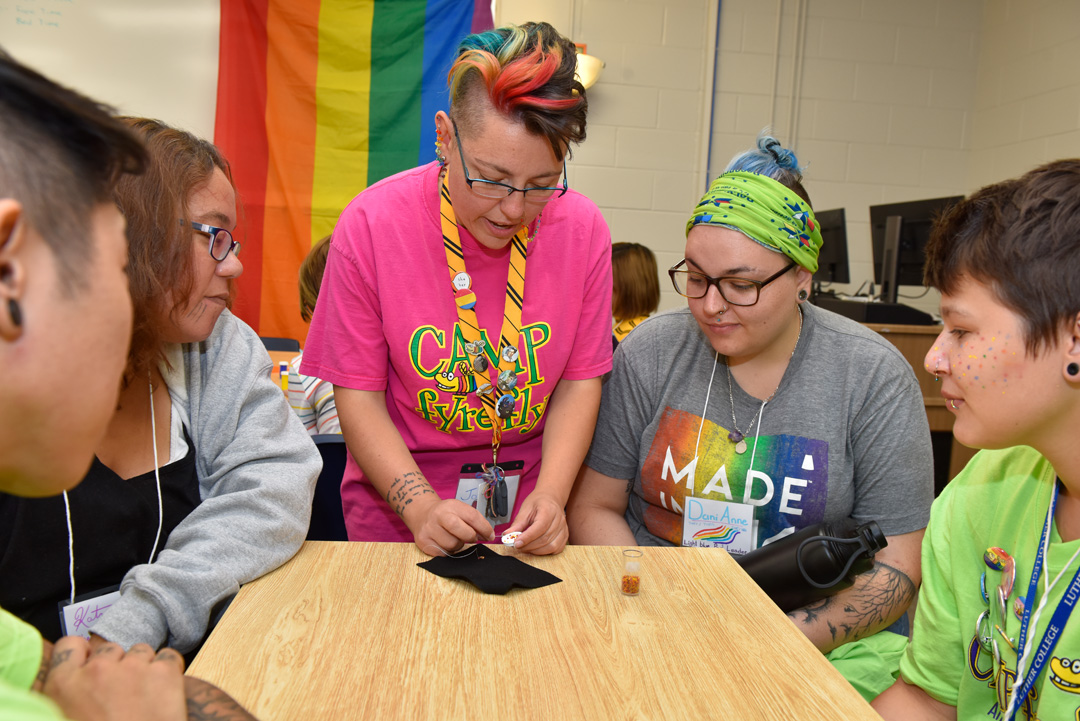
Arrows drawn in coloured chalk adorn a sidewalk that winds past a teepee and between trees toward Luther College at the University of Regina. At the end of the chalk rainbow road is a message: Welcome to Camp fYrefly. We love you.
Inside, Jolie Brewer BEd’12 runs her hand through her short rainbow-coloured hair. She apologizes for her tears. Brewer often finds her work as Saskatchewan Camp fYrefly’s co-chair emotionally overwhelming. She didn’t expect today’s tears so early. She bobs a teabag up and down in a to-go cup as morning sounds echo down the hall. Groggy hellos blend with the scent of fresh coffee and hot omelettes. Most of the youth are already gathered at long tables in Thorn Hall, save for the late sleepers.
Camp fYrefly is a four-day annual summer retreat that alternates between Saskatoon and Regina. The camp welcomes teens and young adults who identify as questioning, gay, transgender, bisexual, intersex, two-spirit and allied. Campers are welcome to be themselves at Camp fYrefly. It’s often the first time they aren’t the minority. Those closest to the program say Camp fYrefly saves lives.
“They’re all broken in some way,” she says. “It’s heartbreaking, because they struggle to reach out for help.”
Brewer has been part of the camp for about seven years. Each year is different, but Brewer speaks of similarities in the rookie attendees: tiny creatures with no self-confidence. “They’re all broken in some way,” she says. “It’s heartbreaking because they struggle to reach out for help.”
Brewer’s voice breaks and she takes a deep breath, acknowledging Camp fYrefly is the first safe place many of the youth have ever been. But she marvels at some campers’ transformations. “By the last day of camp, those once scared little people realize how beautiful they are,” she says.
The camp has been built through the efforts of dozens of volunteers who have contributed thousands of behind-the-scenes hours to make each year possible — and better than the last.
There is a story of self-discovery behind every person who comes to the retreat, including staff and volunteers. Brewer found the camp not long after her husband Jett came out as transgender. The road to now was rocky for the pair. “I don’t know that our relationship would be as strong as it is today without camp. I know camp saves lives,” she reiterates. The couple celebrated 16 years together in 2018.
One-third of fYrefly campers identify as First Nations or Métis, with many coming from northern Indigenous communities such as La Ronge or La Loche. Saskatchewan Transportation Company once provided bus passes to youth in these communities, but the provincial government shut down the service in May 2017. The closure made it more difficult to attend, but it didn’t stop northern youth determined to take in the camp. For the past two years, a grandmother from northern Saskatchewan has driven four two-spirit youth — three from Cumberland House and one from Southend — to camp. That’s 650 kilometres, one way.

Darlene Lanceley, the Knowledge Keeper at camp, exits Luther College and strides to the camp teepee tucked on the grass. An Indigenous leader, most often an Elder, is always present at Saskatchewan’s Camp fYrefly to provide spiritual guidance, stories and healing.
Lanceley begins a smudge as the young adults head to rooms 211 and 215 for the sex ed and healthy relationships workshops. There are workshops focused on mental health and identity, but activities also include yoga, bead working, break-dancing, robotics, and
arts and crafts.
The campers break into small groups to debrief, but they aren’t the only ones who need to unwind. The leadership crew carries the weight of the campers’ burdens in addition to their own. But they know to lean on one another for support.
Brewer reaches out and raps the table twice with her knuckles. “With its 10th anniversary, it’s becoming a well-oiled machine,” she says.
The camp has been built through the efforts of dozens of volunteers who have contributed thousands of behind-the-scenes hours to make each year possible — and better than the last.
“It was exhilarating. It was as if we were breaking ground,” says professor emeritus James McNinch, recalling the camp’s establishment in Saskatchewan 10 years ago. McNinch was the dean of education at the University of Regina — the first dean who was openly gay.
McNinch takes a minute, pushing his dark glasses up the bridge of his nose before crossing his legs. He sets down his cup and rubs his collar bone. He remembers how safe spaces for gay and lesbian kids, let alone transgender, were near-absent in the province circa 2008.
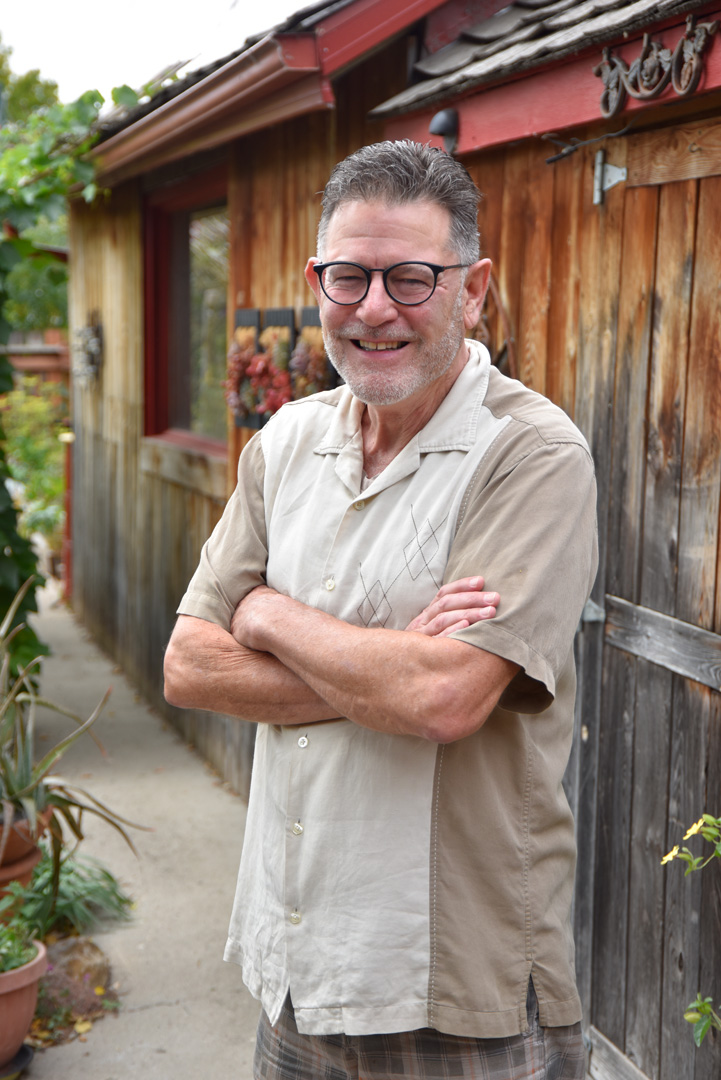
Safe spaces are still hard to come by. Bullying is still present even within schools that have a GSA — or Gay-Straight Alliance, although the phrase Gender and Sexuality Alliance is gaining favour because it reflects a more inclusive perspective.
McNinch says the kids who aren’t supported, “for whom being queer is quite a challenge,” have the toughest battle.
McNinch led the way for the camp, using his position as dean to generate momentum. Camp fYrefly first began at the University of Alberta in 2004 under the leadership of Andre Grace and Kristopher Wells, who work in the University of Alberta’s Faculty of Education. It wasn’t long before they noticed youth coming from Saskatchewan. They approached McNinch to run a camp in Saskatchewan and he enthusiastically accepted.
McNinch brought the camp to life with help from Carla Blakely and Russell Mitchell-Walker, as well as Saskatoon co-chairs Anthony Bidulka and Herb McFaull, and support from the Faculty of Education, the University of Regina and the University of Saskatchewan. The first year, the camp was held at a private facility in Saskatoon and was a success. The location remains a secret for the sake of the organizers and sponsors.
Campers find strength in numbers and learn how to help others along the way. In Alberta, the retreat had always been held on campus but that didn’t seem feasible for Regina at the time.
“We couldn’t imagine that 10 years ago, the campus was a safe space,” McNinch says. “So fYrefly settled into the countryside.”
Food, craft supplies and AV equipment were trucked out to Lumsden Beach Camp, which is operated by the United Church. McNinch and his partner Michael Hamann rented a trailer so they could stay on site. The wooden cabins and rustic scenery were a change of pace from the neat, private rooms in Saskatoon. Hamann was one of the camp cooks.
“Very few understand what it’s like to feel marginalized as the only gay person in a small town or the only transgender person in your school,” he says.
McNinch admits it was exhausting to haul out supplies and prepare meals for 75 people for four days. But the natural beauty on the shores of Last Mountain Lake and the valley’s isolation fostered a special sense of freedom. McNinch recalls a moment from Lumsden when campers were transfixed by Indigenous artist-in-residence Adrian Stimson. They watched Stimson emerge from beneath a buffalo robe adorned in fishnet stockings, a priest’s collar and a crucifix. According to McNinch, at camp, truth and reconciliation work is underway to reverse systematic colonial repression of First Nations’ gender and sexuality.
Lumsden Beach Camp hosted fYrefly three times. By the time 2016 rolled around, camp co-ordinators felt the Regina campus would better suit their needs. Luther College was chosen, but the move was not without growing pains.
“They didn’t quite understand our need for seclusion,” McNinch says.
Residence renovations and summer courses were underway, University students were smoking, and the cafeteria was a madhouse as preteen science camp kids shared the dining room with the queer campers.
“It was quite different from fYrefly being out at Lumsden Beach Camp, where we were just there with the birds,” McNinch says.
Saskatchewan fYrefly co-chair Michael White BEd’03, MEd’07 is a registered psychologist and has been Saskatchewan’s fYrefly counsellor for nine years. He recalls spending one and a half hours listening to an Indigenous camper who lived in northern Saskatchewan. The transgender teen detailed years of traumatic abuse and neglect experienced while lost within the foster care system.
“Very few understand what it’s like to feel marginalized as the only gay person in a small town or the only transgender person in your school,” he says. White grew up in Stephenville, Newfoundland and Labradour, and didn’t come out until later in life. “You don’t have to hide any aspect of your identity at camp.”
The answer was as obvious as it was terrifying. Penner cried as he pulled out his phone and messaged his partner: “I think I’m a boy.” He sighed at the response: “That’s okay.”
Moe Penner, 18, settles into the couch at Luther College. Fidgeting with his sleeves, the First Nations University of Canada Indigenous Social Work student recounts being 15, alone in the dark and in silence as he penned the pros and cons of coming out.
The answer was as obvious as it was terrifying. Penner cried as he pulled out his phone and messaged his partner: “I think I’m a boy.” He sighed with relief at the response: “That’s okay.”
Penner, assigned female at birth, questioned his identity for years. He spent hours in online forums and watching YouTubers. Eventually, he realized it was the gender that was wrong. His partner helped him come out to his mom, who was more accepting than Penner’s father, who said, “She’s 16. She can’t make her own choices.”
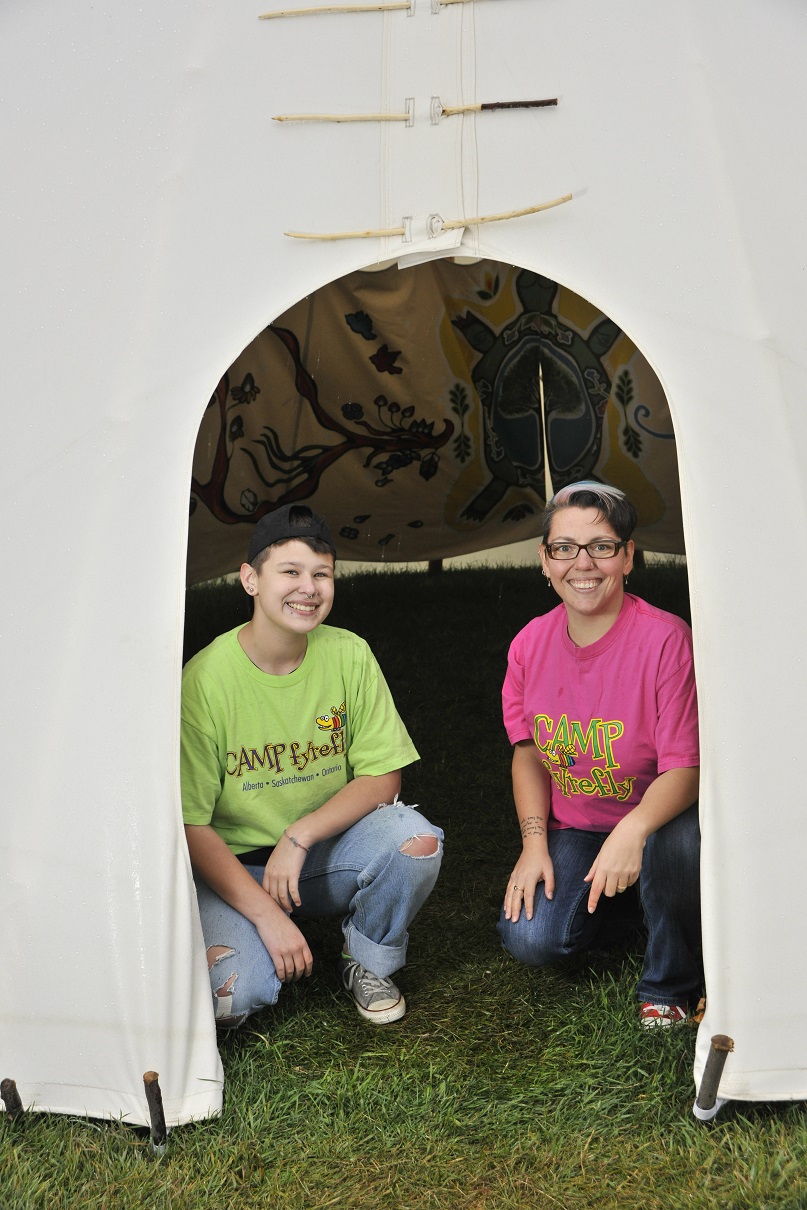
The anxiety from the lack of acceptance persisted and Penner spent days trembling and sweating while attending high school at Regina’s Winston Knoll Collegiate. Suicidal
thoughts would bubble to the surface of his mind.
Penner’s mom took him to a doctor, which helped, but still the mental anguish continued. He found a unique reprieve in the summer of 2016, when his mom dropped him off at Camp fYrefly for the first time. While the first day is always the scariest, it’s not long before campers fall in love with camp.
Penner didn’t hesitate when White asked if he would return in 2018 as a youth leader. “I was ecstatic. I was so excited. Somebody sees some potential in me,” he beams.
Now the new campers are windows to Penner’s past. Penner wants to tell them: “I’ve been through this. It’s okay. It will get better.”
Camp fYrefly is celebrated as Saskatchewan’s first gay camp. The demographic has shifted since it first started, with more youth identifying as trans, two-spirit or gender-fluid. The campers are also getting younger.
“They’re so much different than I was,” says McNinch, who graduated from high school in 1965, a time when “compulsory heterosexuality” was an expected norm.
In 1967, Justice Minister Pierre Trudeau pushed for changes to Canada’s Criminal Code; homosexuality was decriminalized in 1969 as part of those amendments. McNinch didn’t come out until much later in his life, when he moved to Saskatoon with his wife Sharon. A friend suggested McNinch go to a gay club, where McNinch had an epiphany. He moved to Regina after he and his wife separated.
“I see these kids who, like me many, many years ago, had to build new relationships and you can’t do that all alone.”
McNinch says the kids who aren’t supported, “for whom being queer is quite a challenge,” have the toughest battle.
Oh my god, McNinch thought, I’m worried about building resiliency for personal identity, when so many young people know so little about their bodies.
Gender and sexually diverse youth are at greater risk of depression, excessive drug use, suicide, a life on the streets or family estrangement, according to Canadian surveys, studies and academic literature. The risk intensifies in rural and remote communities that have fewer resources. Thankfully, youth emerge from camp with self-confidence and a sense of pride. Their peers become like family. But when they return home to their families, communities and schools, they are most often treated as before.
McNinch has heard tired lines like “He’s come back from camp and he’s more gay than ever.” That’s why fYrefly brings parents and guardians to camp for their own workshop. It’s held on the last day of camp, before they see their kids. Parents meet other parents. They talk about camp, as well as how to handle the future. McNinch has seen a dramatic increase in supportive parents, grandparents and caregivers. With each new set of campers, the session remains an integral part of helping expand the safe space beyond the four days at camp.
McNinch welcomed the 2018 campers at registration. He was there for the parent session and clean-up on the last day. Once again, he saw the evolution of shy campers who hugged and danced their way out the door.
His eyebrows rise as he notes the significant societal change of sexual diversity within his lifetime: “going from completely illegal, illicit and immoral to being legal and celebrated.”
“This idea of light and the light of who you are — that’s fYrefly.” says McNinch. “Hide it under a bushel,” he sings softly. “No. I’m going to let it shine.”
The overarching goal was always to reach a time when camp was no longer necessary. McNinch wonders if that day will ever come. He realizes newcomers are arriving from countries where open gender and sexual diversity is punishable or taboo. He remembers a teen’s question at a Saskatoon workshop: “Can you get pregnant from anal sex?”
Oh my god, McNinch thought, I’m worried about building resiliency for personal identity, when so many young people know so little about their bodies.
McNinch says that camp often brings up examples of why education is needed outside of camp. It’s why fYrefly in Schools is so dear to McNinch’s heart. It’s a practical expansion of camp that carries the fYrefly mandate into the community. The fYrefly in Schools co-ordinators work with school divisions and offer age-appropriate lessons on gender identity and sexual diversity within the Saskatchewan curriculum. They give presentations for students and staff on a wide range of topics that detail definitions, potential outcomes of homophobia or transphobia, and what life is like for queer people. They teach people how to be allies.
It was near the time of McNinch’s retirement when he began to relinquish some of his responsibilities with the camp. He muses about the last 10 years, and the meaning of fYrefly and its curious logo. People don’t always recognize the grinning, bug-eyed, insect as a fYrefly. The oft-misunderstood creature represents a being that creates its own energy and light.
McNinch remembers how Hamann, who was raised in a Lutheran Church, often talks about songs and verses of the Bible.
“This idea of light and the light of who you are — that’s fYrefly.” says McNinch. “Hide it under a bushel,” he sings softly. “No. I’m going to let it shine.”

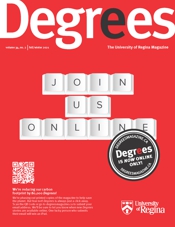

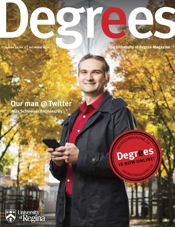


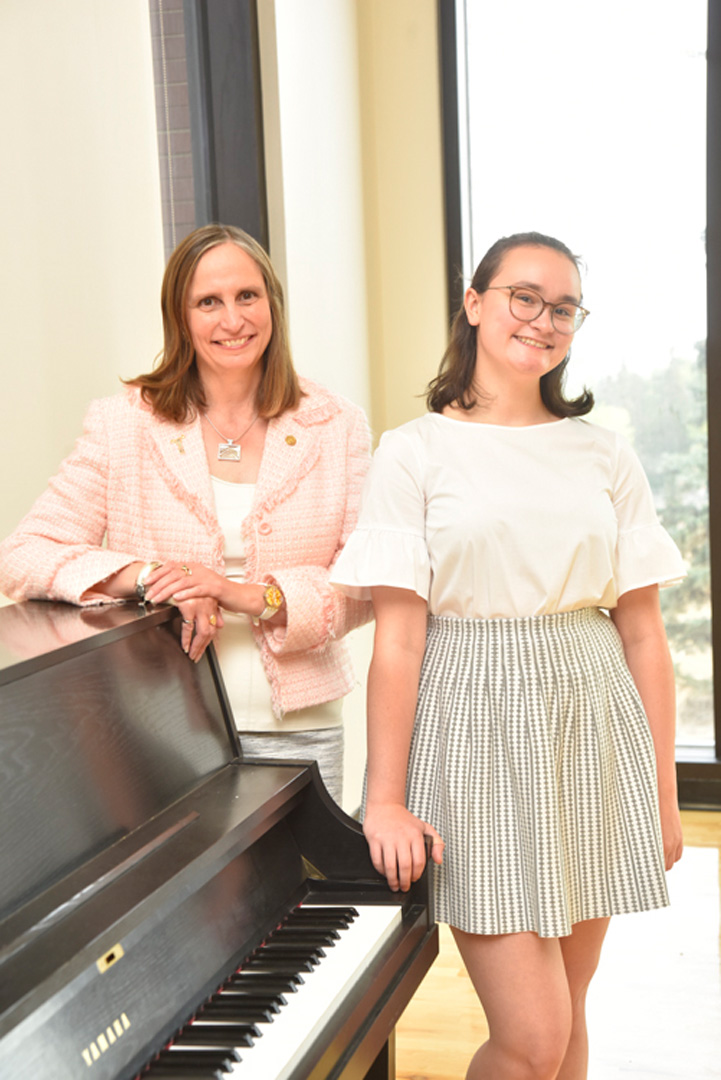 Representing four generations of Regina residents whose lives have been touched by College Avenue Campus are (left to right) Margaret Anne Hodges and daughter Alice Willett. The pair pose in the revitalized College Building in a classroom named for Hodges’ mother, Dr. Alice Goodfellow Hodges. (Photo by Rae Graham)
Representing four generations of Regina residents whose lives have been touched by College Avenue Campus are (left to right) Margaret Anne Hodges and daughter Alice Willett. The pair pose in the revitalized College Building in a classroom named for Hodges’ mother, Dr. Alice Goodfellow Hodges. (Photo by Rae Graham)
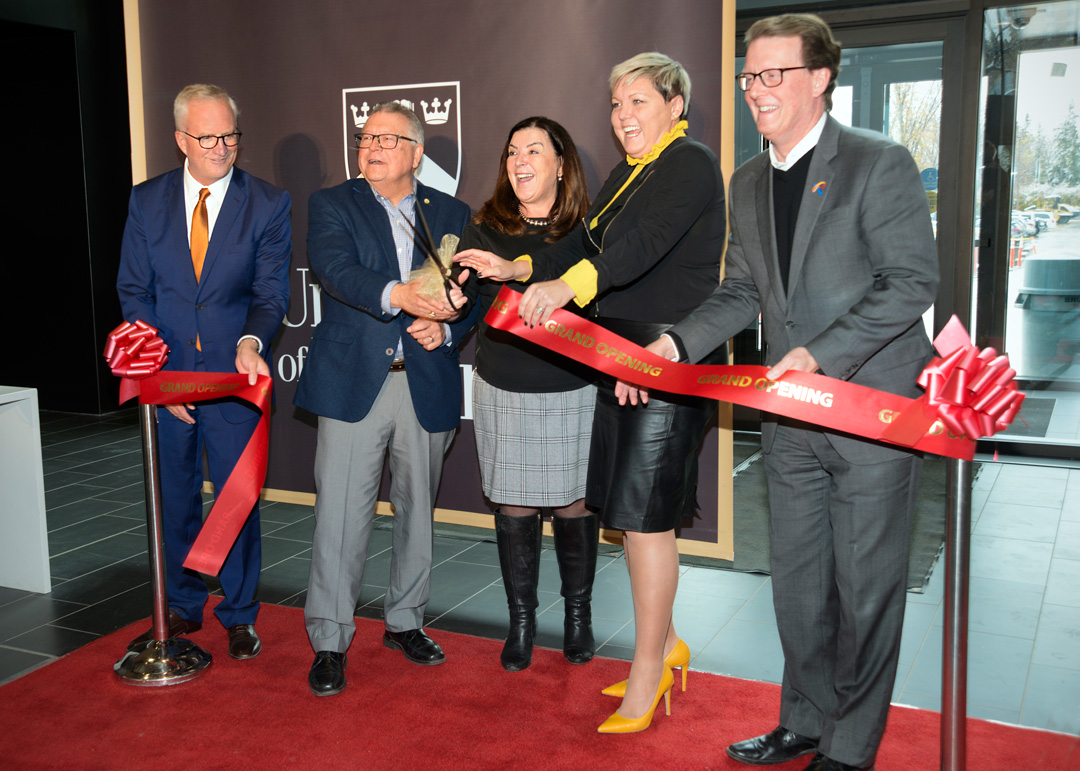 Ribbon cutting ceremony at the October 5 grand re-opening of the College Building (left to right) Dr. Thomas Chase, Provost and Vice-President (Academic); The Honourable Ralph Goodale, Minister of Public Safety and Emergency Preparedness; Dr. Vianne Timmons, President and Vice-Chancellor; Tina Beaudry-Mellor, Minister of Advanced Education; Mayor Michael Fougere. (Photo by Rae Graham)
Ribbon cutting ceremony at the October 5 grand re-opening of the College Building (left to right) Dr. Thomas Chase, Provost and Vice-President (Academic); The Honourable Ralph Goodale, Minister of Public Safety and Emergency Preparedness; Dr. Vianne Timmons, President and Vice-Chancellor; Tina Beaudry-Mellor, Minister of Advanced Education; Mayor Michael Fougere. (Photo by Rae Graham)
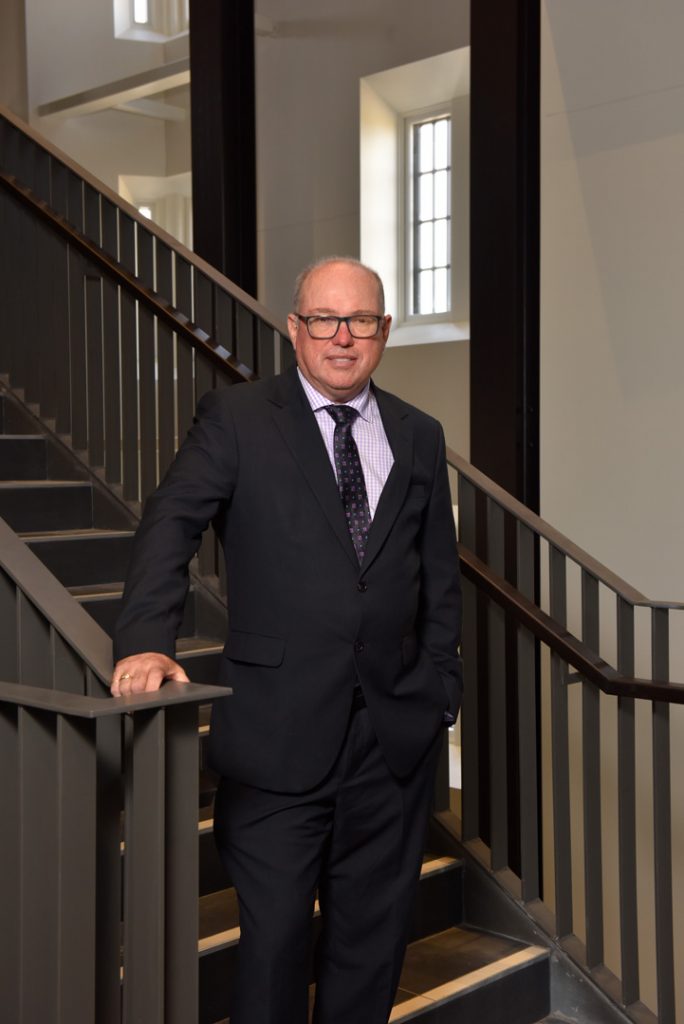 Doug Moen, interim executive director of Johnson Shoyama Graduate School of Public Policy one of Canada’s leading policy schools. (Photo by Trevor Hopkin)
Doug Moen, interim executive director of Johnson Shoyama Graduate School of Public Policy one of Canada’s leading policy schools. (Photo by Trevor Hopkin)
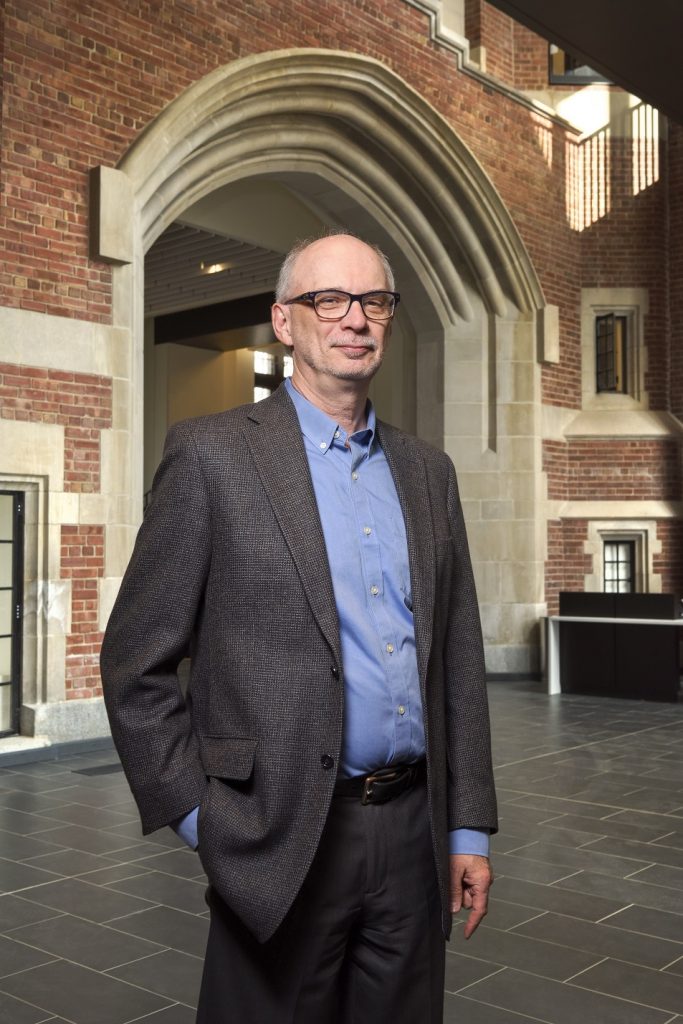 Harvey King, director of the Continuing Education Centre. (Photo by Trevor Hopkin)
Harvey King, director of the Continuing Education Centre. (Photo by Trevor Hopkin)
 Artist rendering of the Conexus atrium that will solve accessibility issues to a refurbished Darke Hall. (Artist rendering courtesy of P3Architecture Partnership)
Artist rendering of the Conexus atrium that will solve accessibility issues to a refurbished Darke Hall. (Artist rendering courtesy of P3Architecture Partnership)
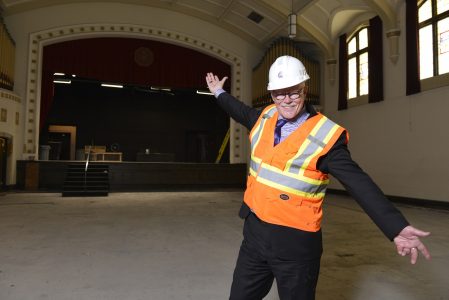 Donald Luxton, the head of Donald Luxton and Associates, Western Canada’s foremost cultural and historical management company and the consultant working on the University’s College Avenue Campus Renewal Project. Shown here inside Darke Hall. (Photo by Trevor Hopkin)
Donald Luxton, the head of Donald Luxton and Associates, Western Canada’s foremost cultural and historical management company and the consultant working on the University’s College Avenue Campus Renewal Project. Shown here inside Darke Hall. (Photo by Trevor Hopkin)